The Mughal and the Tudor
The two warrior poets are a perfect study in the elusive nature of power
 TCA Raghavan
TCA Raghavan
 TCA Raghavan
TCA Raghavan
 |
22 Dec, 2023
|
22 Dec, 2023
/wp-content/uploads/2023/12/MughalTutor1.jpg)
A portrait of Abdur Rahim Khan-i-Khanan by Hashim, circa 1627
MY INTEREST IN ABDUR RAHIM KHAN-I-KHANAN (1556-1627), the great Mughal general and poet and author of Rahim’s Dohas, started in my schooldays. I was also spurred by a parallel interest in one of his contemporary figures, although from an entirely different geographical and cultural context. Sir Walter Raleigh (1552-1618) lived in Tudor England, a world away from Mughal India but they had enough in common to make one wonder what it would have been like if they had met or had participated in some great adventure and enterprise together. It was like a school boy’s fantasy cricket team—the greatest of all time cutting across time and space, playing together in that one unforgettable match. Certainly, the Mughal and Tudor line-ups gave plenty of options and Rahim and Sir Walter together in a single frame was an arresting idea.
Strange though it may sound for a 1960s and 1970s schoolboy in India, Walter Raleigh and the Tudors were not entirely foreign to me. In part this was because in India of that time British history was something you interfaced with in films, in school, in comics, and in books. Walter Raleigh had come alive to me through a series called Ladybird Books, small illustrated tales for young children. In one of their series titled ’An Adventure from History’ was a book on Raleigh by someone with the exotic name of L du Garde Peach. Un-English though the name sounded, the story was a compelling read.
The Ladybird Raleigh—like all others in the series—had a page of text and a facing page of colour illustration. The latter made Raleigh come alive, telling his story from his childhood to his becoming a great Tudor figure and finally to his long imprisonment in the Tower of London. Walter Raleigh’s story was largely also the story of Tudor greatness. A relative nobody to start with, he quickly rose in Queen Elizabeth’s favour. He was famous for his military successes in Ireland and France, but is best known for his efforts to found new colonies in North America after he received a royal charter to colonise any lands not under the rule of any other ‘Christian Ruler’. These colonies in North America would, it was believed, be the source of unlimited gold and also serve as a base to raid Spanish convoys coming back from South America well-loaded with gold and treasures.
This geopolitical rivalry between Spain and England was underwritten also by a deep religious divide—Catholic vs Protestant. Tudor England’s most significant narrative moment—the defeat of the Spanish Armada (a Spanish fleet that tried unsuccessfully to invade England in retaliation for English ships raiding Spanish convoys), created many heroes and also consolidated Raleigh’s own reputation as a great naval leader, adventurer and sailor.
The Walter Raleigh story has, however, other attributes. He was a poet and writer of significance and recognised as such—no small achievement in an age of literary excellence and high standards. He was, after all, also a contemporary of the great Shakespeare. Then his private life added another layer of mystique. One of the favoured set around the virgin Queen Elizabeth, he stood out as a dashing and romantic courtier. But she was very displeased when he married one of her ladies-in-waiting, Bess Throckmorton, without her permission. Both were imprisoned but he was able to gradually make his way back—although he was perhaps never to regain his earlier status and position. But his willingness to sacrifice royal favour for love added to his legend as a gallant and daring adventurer.
If his position as a great lord in the reign of Queen Elizabeth I, the greatest of the Tudors monarchs, was secure, disaster came with the death of his sovereign. Elizabeth I’s death in 1603 brought to an end the Tudor phase of English history. Her successor was James I, the first of a new dynasty of the Stuarts. The differences with the Elizabethan court were many but in some significant part also focused around relations with Spain. For the latter, Raleigh’s naval exploits against their vessels were not forgotten. Raleigh would spend virtually the rest of his life in prison before finally being executed by beheading under Spanish pressure. The manner of his death was the final act that cemented Raleigh’s legend, both among his peers and for posterity.
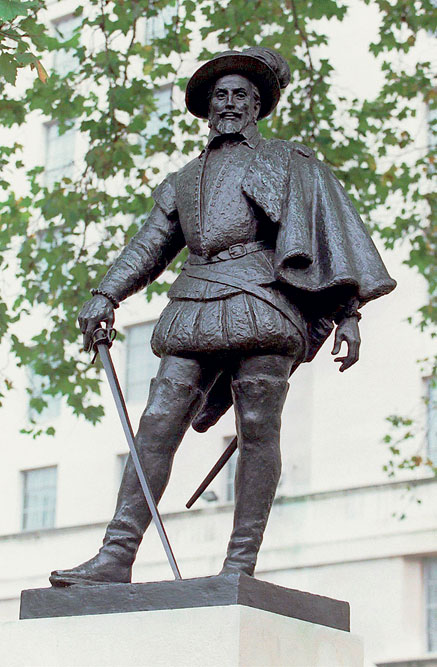
All of this was easily gleaned from du Garde Peach’s Raleigh in the Ladybird edition. Gradually I also discovered that some details, such as Raleigh’s beheading had been left out, possibly thought to be too gruesome for the young minds the book was targeted at. Yet, over the years the thought has remained with me that just how effective Ladybird Books and du Garde Peach were in invoking an age and a person long past.
This tradition was by no means a recent one. The Raleigh biography is as much about his mythology that has gripped imaginations over the centuries, both for its adventure and romance as well as a subset of the wider fascination with the Tudors. There are innumerable biographies of Raleigh and new ones continue to come out. Some of Britain’s best-known historians have found him an irresistible subject. I recall seeing a book published in the 1880s—it was no less than a bibliography of works by and on Walter Raleigh and ran to some 100 pages. It is almost as if every new generation in Britain finds something new of relevance for itself from the Tudors in every century since their passing.
Walter Raleigh’s story was also the story of Tudor greatness. A relative nobody to start with, he rose in Elizabeth’s favour. He was famous for his military successes in Ireland, but is best known for his efforts to found new colonies in America
This endless fascination with the Tudors— the current phase has been termed Tudormania—is, of course, as much for their excesses. In the latter category Henry VIII and his six wives—two of whom were executed and two whose marriages were annulled—have provided no end of gory entertainment for subsequent epochs. But the Tudors’ achievements also were substantial and three centuries later, from the late 18th century onwards as Britain emerged as an imperial power, four achievements seemed particularly relevant. The establishment of the Royal Navy under Henry VIII; the founding of the British East India Company; the colonisation of Ireland (in which Raleigh, too, played an inevitably bloody role); and the colonies in North America. Over time, elements such as the Reformation and the induction of professionals to run the state—Tudor statesmen Thomas Cromwell, Cardinal Wolsey, and Francis Walsingham were famously not aristocrats—have acquired more prominence. To some, Tudor history in fact anticipates Britain’s troubled interface with Europe in modern times down to the Brexit saga. For others, the Tudors provide a microcosm of British attitudes to colonialism and imperialism.
THE MUGHALS HAVE LONG HELD in India much of the same unrivalled position that the Tudors held in England. That privileged perch is now challenged—from changing politics, from historical revisionism, and finally from the legitimate interest generated by other dynasties, perhaps more local or regional but still substantial players. The strongest criticism against the Mughals derives from a somewhat unvarnished nativism—that the Mughals were foreigners. This has an obvious religious dimension also.
But the Mughals, it may well turn out, are not so easily dislodged from history’s front rank. For one, it was the Mughals who, after a long gap of over a millennium at least, consciously went about uniting the subcontinent under a single dynastic power. Two, although the Mughals were in terminal decline when the British established themselves in different parts of the subcontinent, displacing different Mughal successors like the Marathas, the Sikhs, Hyder Ali and his son Tipu in Mysore and others, the idea that the British supplanted the Mughals remained strong in public consciousness. The fact that the Red Fort was the storm centre of the great revolt against the British in 1857 and that the Mughal dynasty would be finally extinguished as an act of retribution by the British has further reinforced that idea. So, notwithstanding the nativist-cum-religious critiques of the Mughals, their position will endure even when coexisting with the growth of interest in other dynasties.
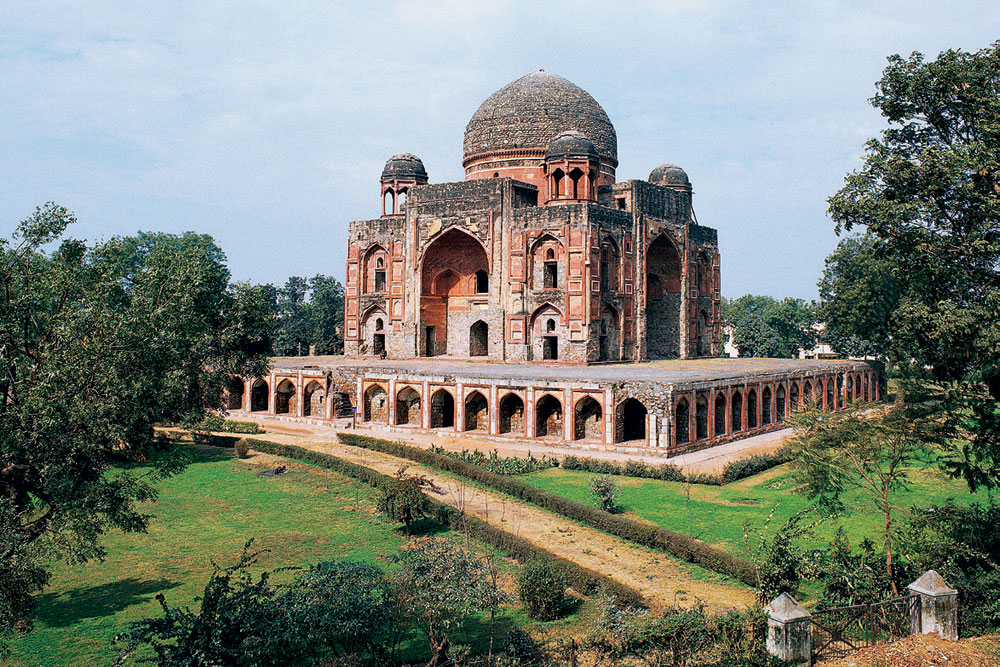
During my school years there was no precise equivalent guide to Abdur Rahim Khan-i-Khanan like du Garde Peach provided for Walter Raleigh. But Rahim was not an unknown quantity either and Hindi poetry primers had samples of his verse and a paragraph or two of biographical detail—basically that he was a great Mughal general and courtier. But little more than that was known about him; perhaps also in the 1960s and 1970s the great Mughal emperor Akbar dwarfed all his courtiers comprehensively.
Abdur Rahim’s marriage to Mah Banu was a long one. It’s quite possible there was great love— the tomb he built for her at Nizamuddin stands out as one of the few Mughal structures to commemorate a woman not of the imperial family
Yet, even from the skeletal details available, a picture of Abdur Rahim Khan-i-Khanan as a great nobleman could be easily constructed. His ancestry itself gave him a certain prominence. He was the son of Bairam Khan, Humayun’s saviour who helped him re-conquer his kingdom in India and who, after Humayun’s death, became the 13-year-old Emperor Akbar’s regent. Rahim’s own achievements as even a relatively young man were considerable—military victories in Gujarat, the conquest of Sindh for the Mughals, and then a long tenure in the Deccan at the head of large Mughal armies pressing southwards. Alongside these military and political achievements, were others—he was responsible for the construction of several magnificent buildings, as well as being a patron of poets and the arts. I learnt only later that his reputation as a patron of Persian literature was greater than that of any of his contemporaries, but as he was a regular in the primary and middle-school syllabi for students of Hindi, it meant his achievements as a Hindi poet had most prominence.
These stories of great achievement meant a certain convergence in the careers of Walter Raleigh and Abdur Rahim Khan-i-Khanan. We know less about the Khan-i-Khanan’s personal life than we do about Raleigh’s—but the former’s marriage to Mah Banu was a long one. It’s quite possible there was even great companionship and love—after all, the tomb he built for her at Nizamuddin in Delhi stands out as one of the few Mughal structures to commemorate a woman not of the imperial family. Certainly, this tomb anticipates the Taj Mahal and perhaps was even a precursor to it and not just in terms of architectural features.
The convergences grow stronger towards the end of their lives and as imperial hierarchies underwent transition. For Walter Raleigh, the accession of James I meant long imprisonment, abated once, but still ending with his execution. Akbar’s death and his son Salim’s accession as Emperor Jahangir did not mean any immediate change for the worse for Rahim. But he was entering a more uncertain phase—as indeed others were. For one, the situation in the Deccan where he was the commander-in-chief did not permit any easy success or solution. The great historian Jadunath Sarkar was to describe the Deccan as the ”Spanish Ulcer” (referring to Napoleon’s campaign in the Iberian Peninsula which caused him much grief) for a later generation of Mughal armies seeking to expand southwards. The analogy applies equally to Rahim’s campaigns in the Deccan in the early 17th century. A new emperor—Jahangir—meant a different court and keeping different factions satisfied would always be a difficult venture. In the last decade of Rahim’s life, we find him struggling against these factors without much success, but also battling personal tragedies as the most capable of his sons died from excessive drink and another was lost to illness.
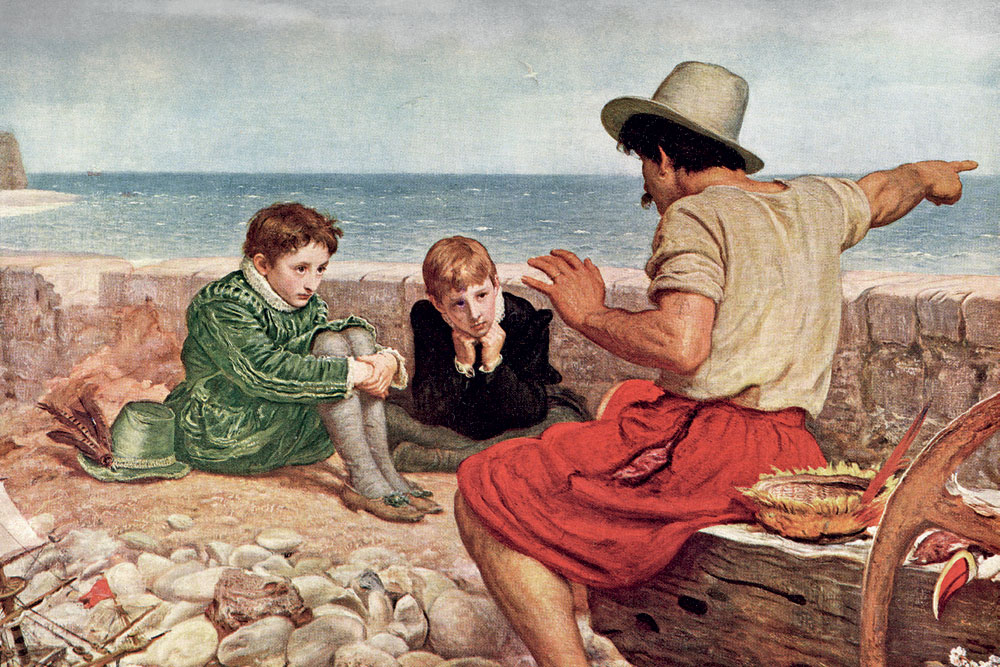
But what finally proved his undoing was something even less in his control. Differences between the emperor and his most capable son, Khurram (later Emperor Shah Jahan), soon spilled over into civil war whose debilitating effects spared no one; and the higher you were in the hierarchy, the greater was the chance of being cut down. Rahim was disgraced; a son and grandsons executed, with both factions turning with vengeance on this tallest of all courtiers.
This tragic end in many ways completes Abdur Rahim Khan-i-Khanan’s life in much the same way as Raleigh’s execution did for his. Their military achievements, their skills as courtiers and their literary enterprises bring the Mughals and the Tudors on to the same frame. Their ends further consolidated that position—underlining that both worlds were in their fundamentals unforgiving ones, and their tragedies underline the essential arbitrariness of all absolutist systems.
Walter Raleigh was not entirely foreign to me. This was because in India of that time British history was in films, school and books. Raleigh had come alive to me through the ladybird books series, small illustrated tales for young children
The differences between the two were equally evident. Superficially, it appeared that Walter Raleigh’s canvas was a much wider one geographically—he fought in France and Ireland, organised naval expeditions against Spanish fleets and vessels and, finally, was also invested in efforts to establish colonies in North and South America. Perhaps this vast canvas was inevitable if the shackles of a little England had to be broken and much of the Tudor legacy is derived from the fact that they sought to do so on the strength of naval power projection. Yet Abdur Rahim Khan-i-Khanan’s realm was no less vast. Afghanistan, Iran, and Central Asia were all part of his mental landscape although his own military and political activity focused on Sindh, Gujarat, and the Deccan.
The point perhaps is not which canvas is wider but that one was a maritime world and the other a continental realm, and that is a central difference between Walter Raleigh and Abdur Rahim as it is between the Tudors and the Mughals.
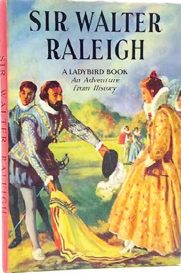
Despite the convergence in these two careers, there was a wide difference in what was easily available and accessible to the public about these two couriers. As mentioned earlier, there had been a considerable body of works on Walter Raleigh for a long time, so something like du Garde Peach’s book on Raleigh had a considerable body of historical detail to draw upon. Knowledge about Rahim in India—although well known because of his Hindi poetry—rested on more slender foundations and principally students of Hindi literature were interested in this Mughal nobleman who left such an impression on their chosen language of study. In the early 20th century—an age far more bilingual than we are today—many scholars of Hindi literature also had formidable reputations as Persian scholars. They could read the Persian chronicles and glean details about Rahim whose reputation as a Hindi poet had outlived knowledge of his political and military achievements.
But it was only later that I encountered something which could be said to be a kind of equivalent of du Garde Peach for Rahim. It did not have the splendid illustrations of the Ladybird series and it was certainly meant for a much older age group—I myself read it only at university. Muhammad Hussain Azad’s Darbar-i-Akbari had the great virtue of being written by a master narrator and animator of things long past. Published in the late 19th century, it was an inspired work—Azad was then descending into insanity and the work was written in his lucid moments, but he claimed that Abul Fazl, Akbar’s great chronicler, dictated the contents to him every night. Azad was verbose, anecdotal, endlessly entertaining but, most of all, determined to recreate the splendour of an age whose end he had seen in the sack of Delhi as the British retook Delhi in the aftermath of the great revolt.
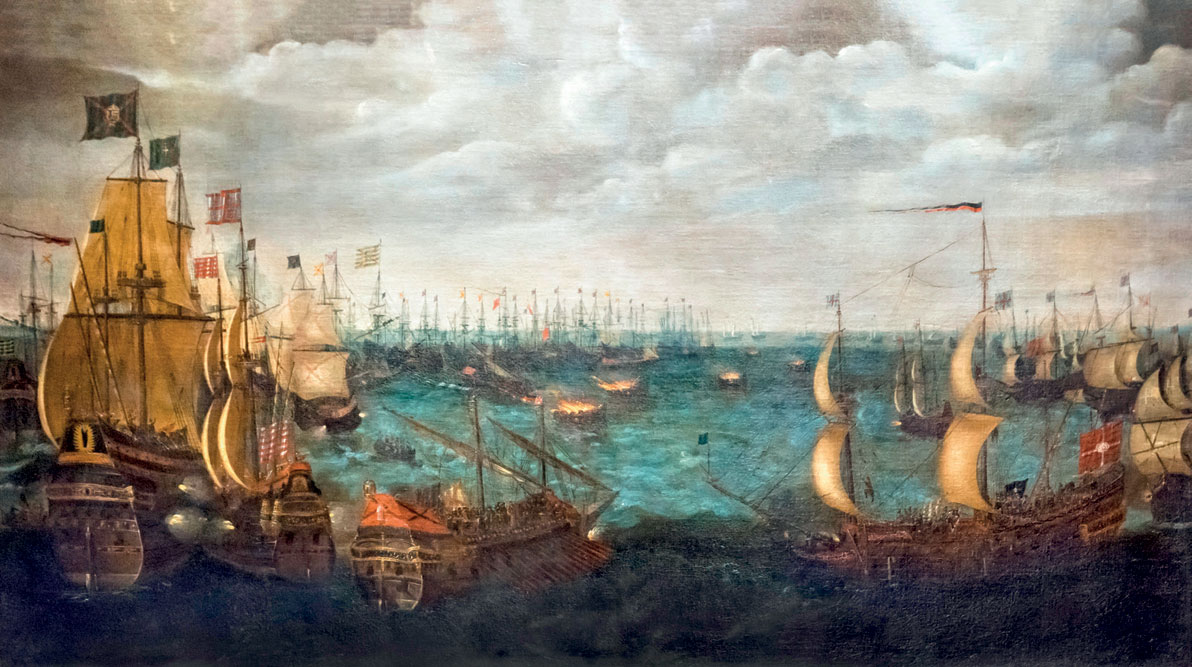
The book in its Hindi translation had first appeared in 1925. By the time I read it in the mid-1970s, the Mughals were well established in their status as the premier dynasty of medieval India. Films like Mughal-e-Azam on the Akbari dispensation cemented that status, but it was also evident to many that Azad’s Darbar-i-Akbari was itself a kind of ur-text for such efforts. What had appealed to me about Azad’s recreation of Akbar’s court is the prominence Abdur Rahim Khan-i-Khanan had in it. After the emperor he is easily the most important character in the book. Yet, surprisingly, despite this long and discursive treatment, there is no mention of Rahim’s Hindi poetry in the book. The Hindi translator was surprised enough about this omission to make a specific mention that Azad obviously did not realise that the Mughal nobleman Abdur Rahim Khan-i-Khanan was the great Hindi poet Rahim.
What is interesting is how these two men, contemporaries, but from very different cultures, addressed their respective worlds in not dissimilar ways. They were ambitious men, curious about the world
As I read more about Rahim and delved into his Hindi poetry, I wondered about this and in so doing understood that a key question that we had to ask about Khan-i-Khanan was how history had treated different aspects of his legacy. Posing the question in these terms meant accepting that our contemporary history profoundly impacts the way we perceive our medieval past. To professional historians this is something entirely self-evident, and yet it always is a matter of some surprise that the act of peeling away layers of memory and historical interpretation is also very much an act of self-discovery and it creates a basis to better understand our own times.
THE LATE 19TH AND EARLY 20TH CENTURIES ADDED HUGELY to our knowledge of this Mughal nobleman. But alongside this now new knowledge, also came new layers of meaning. In particular, the Hindu-Muslim polarisation and the Hindi-Urdu controversy thus became an inescapable part of Khan-i-Khanan’s history and legacy.
“It is difficult to believe in Sir Walter Raleigh,” wrote Edward Thompson, one of the most prominent historians in 1930s Britain. By this, he probably meant that disaggregating the historical figure from the layers of mythology that iconic figures always generate is not easy, but it is precisely the task the historian has to address. Can there ever be something akin to success in peeling away the detritus of centuries and revealing the real thing shorn of all additions and burnishing? It is always an impossible venture— a truly elusive holy grail. Yet, at the same time, it is these layers that make the past accessible to us—in a sense approximate to our own times and in the process they give a new value to history itself. Thus, Thompson was also to write about his interest in Raleigh: “My own generation from the insecurity, and changes and variety of our experience seems to me to be closer in sympathy to the Elizabethans than any intervening generation has been so that a career which has always seemed like a preposterous fairy tale now takes on the semblance of humanity”. We could perhaps say this about many other historical figures and contexts.
The late 19th and early 20th centuries added to our knowledge of this Mughal nobleman. But also new layers of meaning. The Hindi-Urdu controversy became an inescapable part of Khan-i-Khanan’s legacy
To many, this twin fascination with the Tudors and the Mughals may look like a classic illustration of the dual colonisation of the Indian mind—first by continental invaders from Central Asia and then by those who came by the maritime route from Europe. The debate, if it can be called that, is not entirely a new one and will also never have a satisfactory closure. But to me the polemics of this really are not the point. What is interesting is how these two men, contemporaries, but from very different cultures, addressed their respective worlds in not dissimilar ways. They were ambitious men, curious about the world, with a genuine interest in patronage of the arts. Both were accomplished poets, great warriors acclaimed for their strategic prowess, one on land and the other at sea. They were both acknowledged leaders of men, and both possessed the calculation and the will to wield influence in their respective courts. Truly, men for all seasons. Yet all their accomplishments counted for nothing when power shifted, allies and enemies regrouped, and disgrace overtook them. Perhaps their stories are as much about the elusive nature of power and the dangers of seeing it as permanent and unchanging—a notion as true of the 16th century as it is of the 21st. So, it is really power in all its elusive manifestations and attributes that we study rather than this or that dynasty.

/wp-content/uploads/2025/01/Cover_Kumbh.jpg)









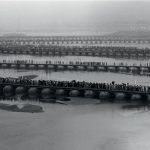


More Columns
The lament of a blue-suited social media platform Chindu Sreedharan
Pixxel launches India’s first private commercial satellite constellation V Shoba
What does the launch of a new political party with radical background mean for Punjab? Rahul Pandita